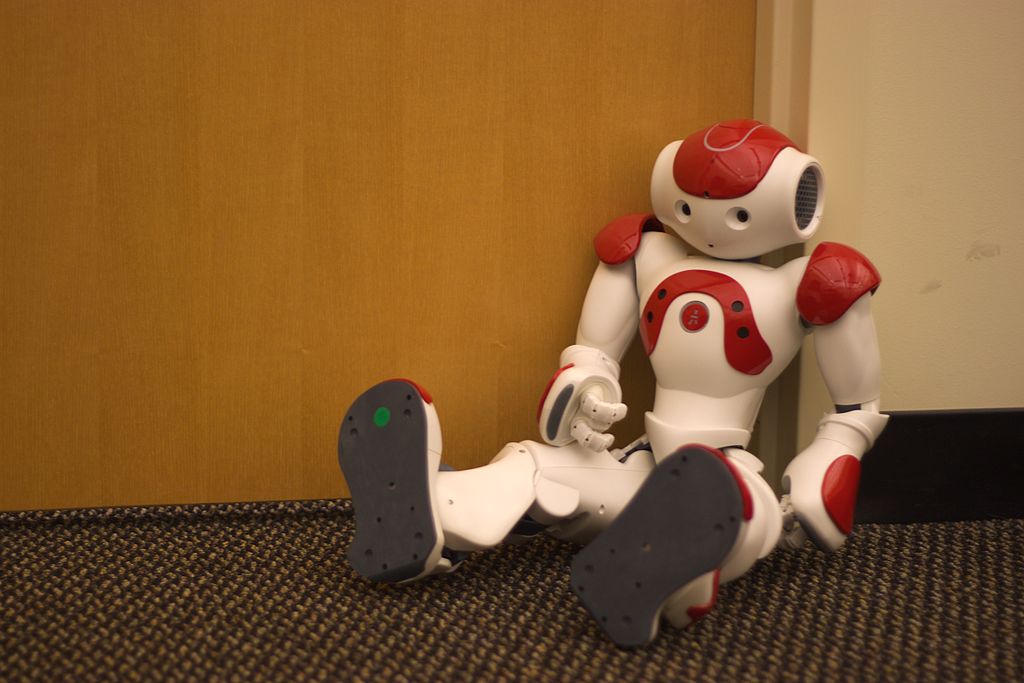
Once the subject of science fiction, robotics is now the fastest growing advanced technology used in the fields of science, mathematics, engineering, and technology, with concept ideals which can be applied to all levels of education. The most advanced levels of technology can be seen in this field through the application of engineering, mathematics, and mechanics, and the presence of robots in the classroom can help students grasp these concepts. NAO, the humanoid robot from Aldebaran Robotics, is a versatile (not to mention adorable) tool for both research and education. On its 5th generation, NAO has been a development project over the past decade, enhancing technology and allowing researchers to study the human-robot interaction (HRI), as well as allowing for a more focused study tool used in classrooms, allowing students hands on access to some of the most advanced technology in robotics in the world.
NAO is the leading humanoid robot whose use in research and education has allowed both educators and researchers alike to make breakthroughs in programming and applied research. The NAO is equipped with several sensors to help with these applications. Such sensors include a Gyro, accelerometer, force sensors, infrared sensors, and tactile sensors. It also has 2 cameras and 4 microphones, allowing commands to be heard and processed clearly and for monitoring to record the interaction between robot and students for later evaluation. The NAO’s application in the classroom is extremely helpful to both students and educators alike.
How can the NAO help students?
By allowing hands-on experience, this revolutionary educational robot can help students make a connection to a wide range of fields, including computer science, mechanics, and electronics. This comprehension inspires a higher level of motivation and interest for careers which would include the aforementioned fields. Working together with the NAO in a group setting to achieve a common goal, it can be used to help with communication, problem solving, and teamwork.
How can the NAO help educators?
As an educator, the struggles of lesson and project planning are alleviated. With the use of NAO, projects that encompass robotics and computer sciences are generated to cover numerous aspects of the educational and developmental processes. These labs are proven to generate engagement within the classroom and help increase the comprehension and retention of difficult curriculum material. This kind of hands-on teaching experience is also inspiring more students, the majority of them female, to enter the fields of technology, computer science, robotics, and engineering.
What other applications does NAO have?
In 2013, Aldebaran Robotics announced a new version of NAO which would help educational practices for students with autism and special needs. ASK (Autism Solution for Kids) NAO is smaller, allowing it to be more accessible to small children, and the accompanying program allows educators access to planning tools and a form of monitoring to help analyze the student’s response to the lessons put in place by NAO. Allowing a more comfortable interaction and learning experience for children with disabilities gives this version of NAO an adjusted approach to the processes which previously may not have been as effective.
While sentient robotics is something that was unthinkable 30 years ago, the betterment in the field shows just how quickly our technology is advancing. Giving students, teachers, and researchers the opportunity to have hands on access to this level of advanced robotics, engineering, and computer sciences allows them the opportunity to understand and eventually add to the capabilities of the already advanced technology. Through the promotion of hands on learning, NAO has exponential capabilities to help educators grow their current practices and will help future generations learn the complexities of this level of science with ease.

